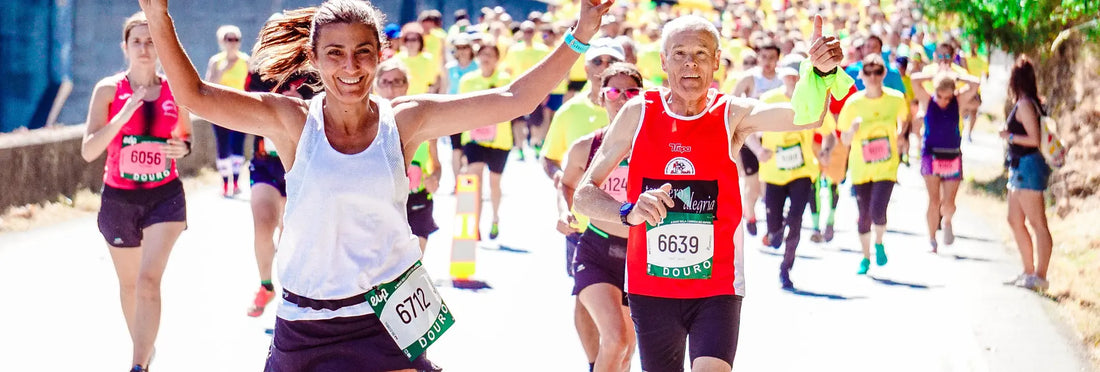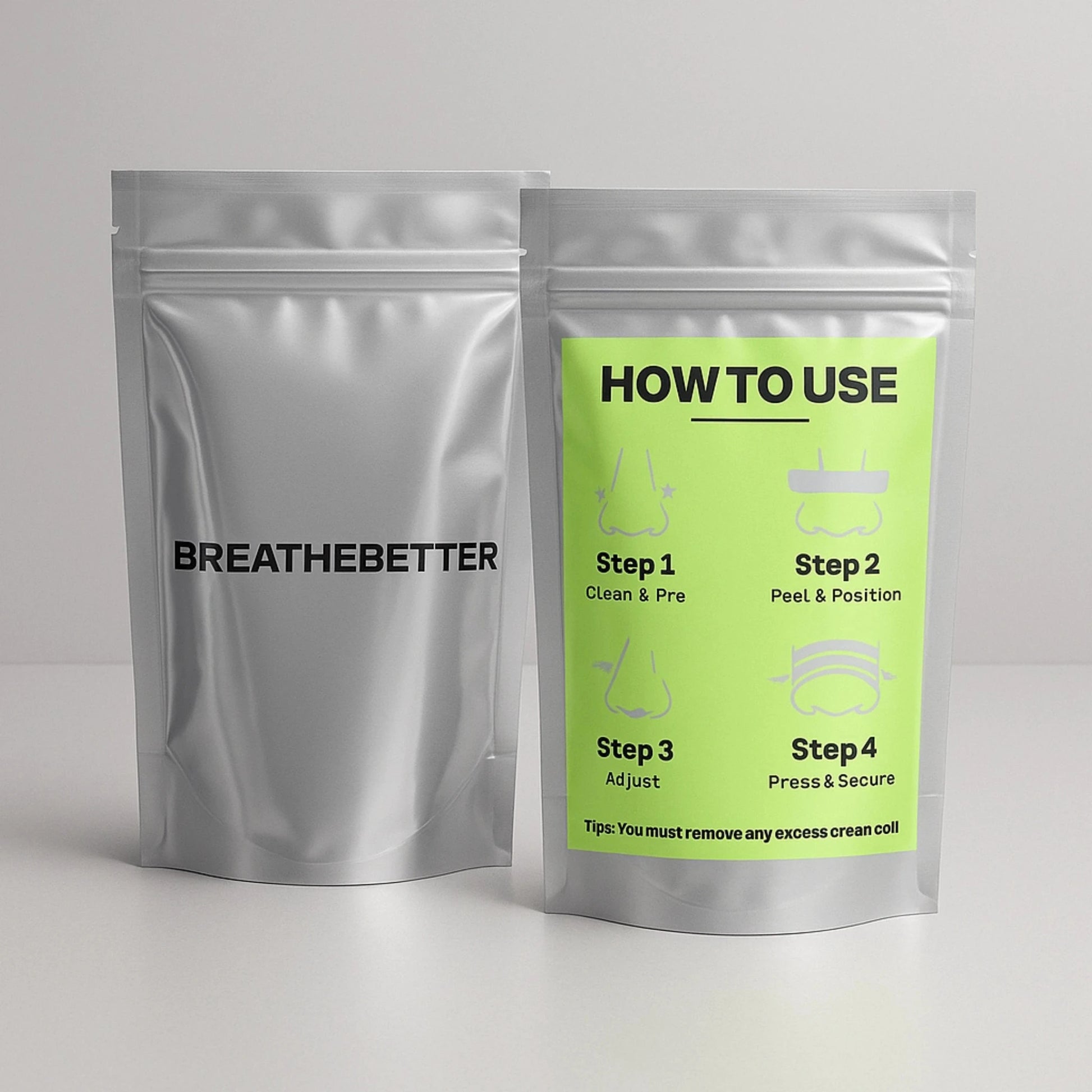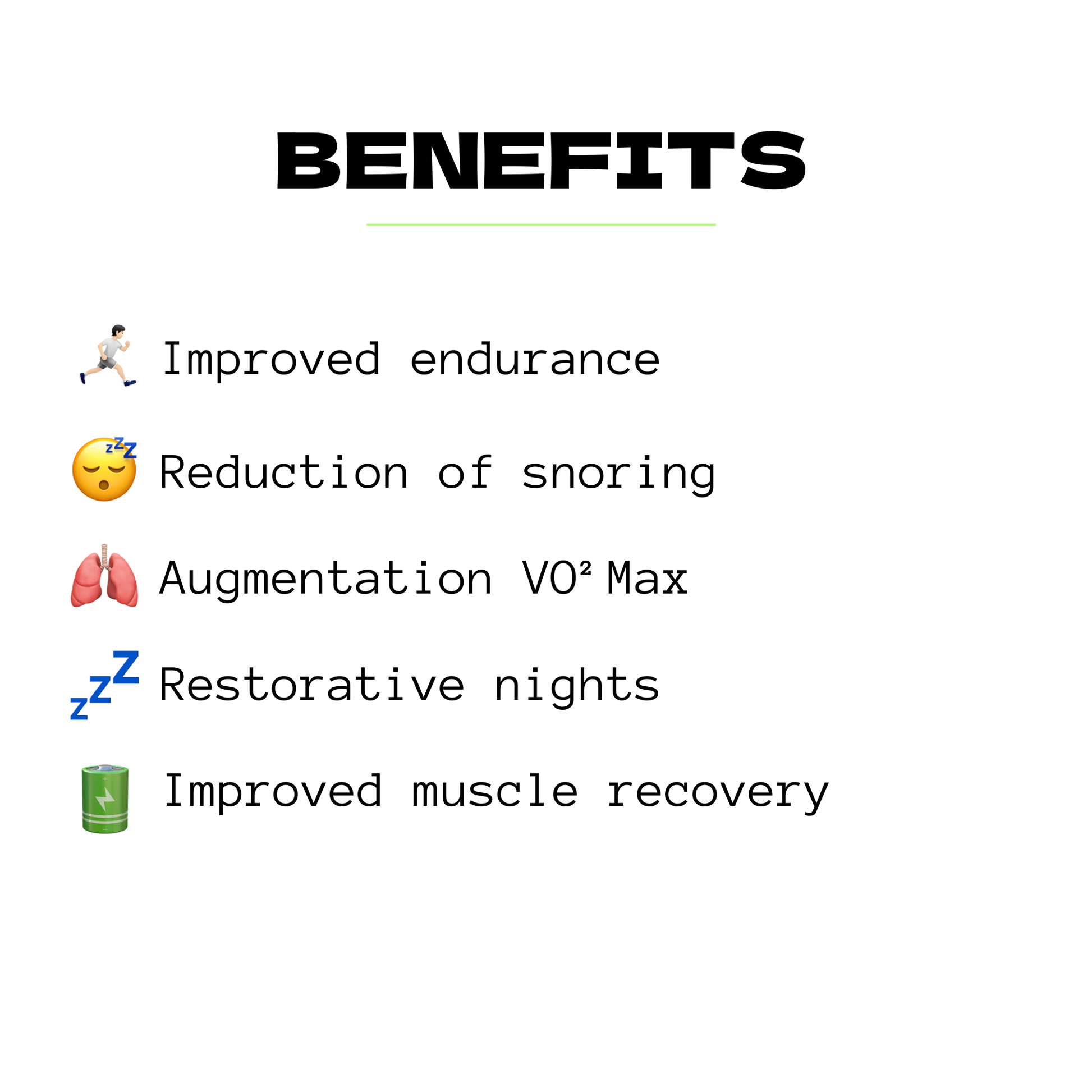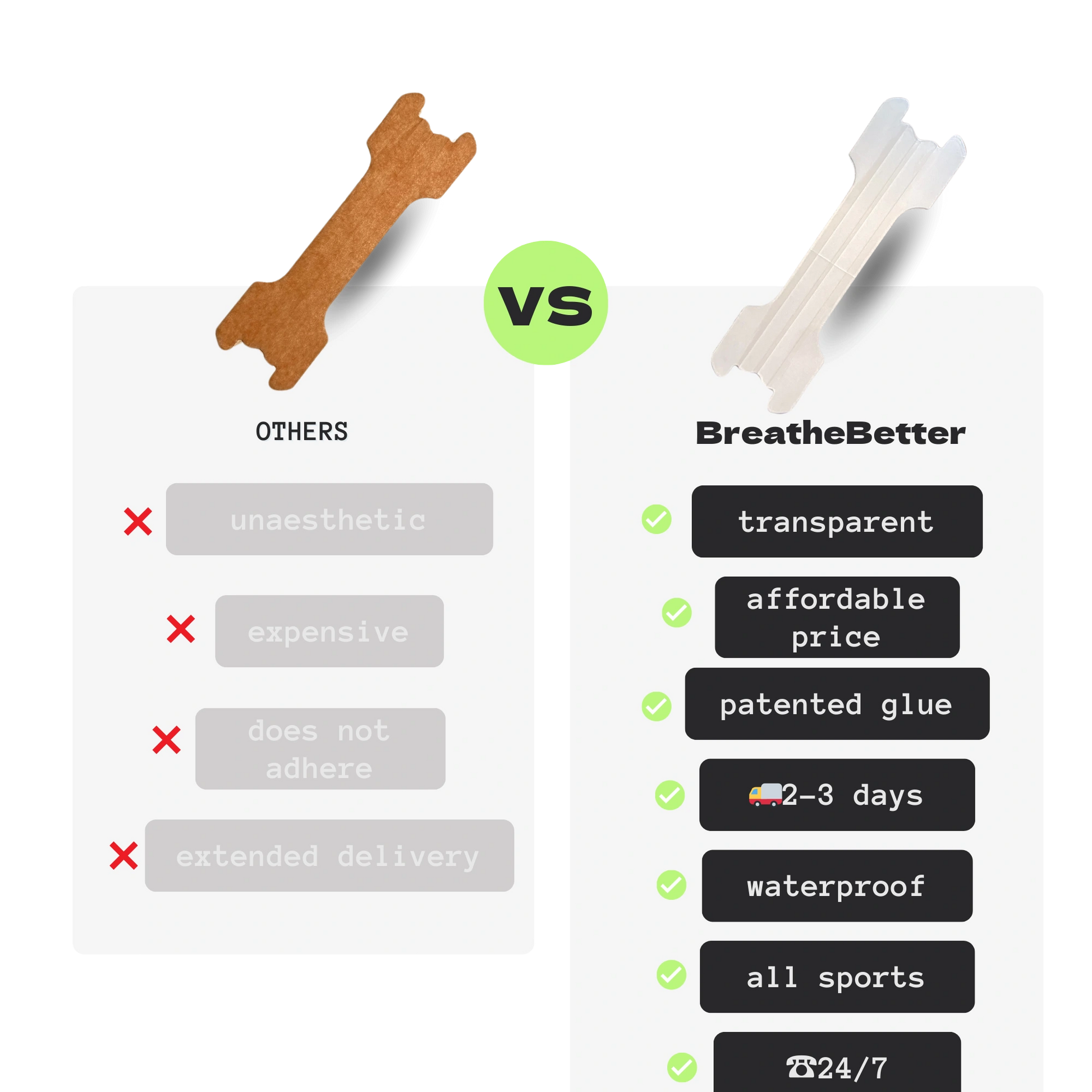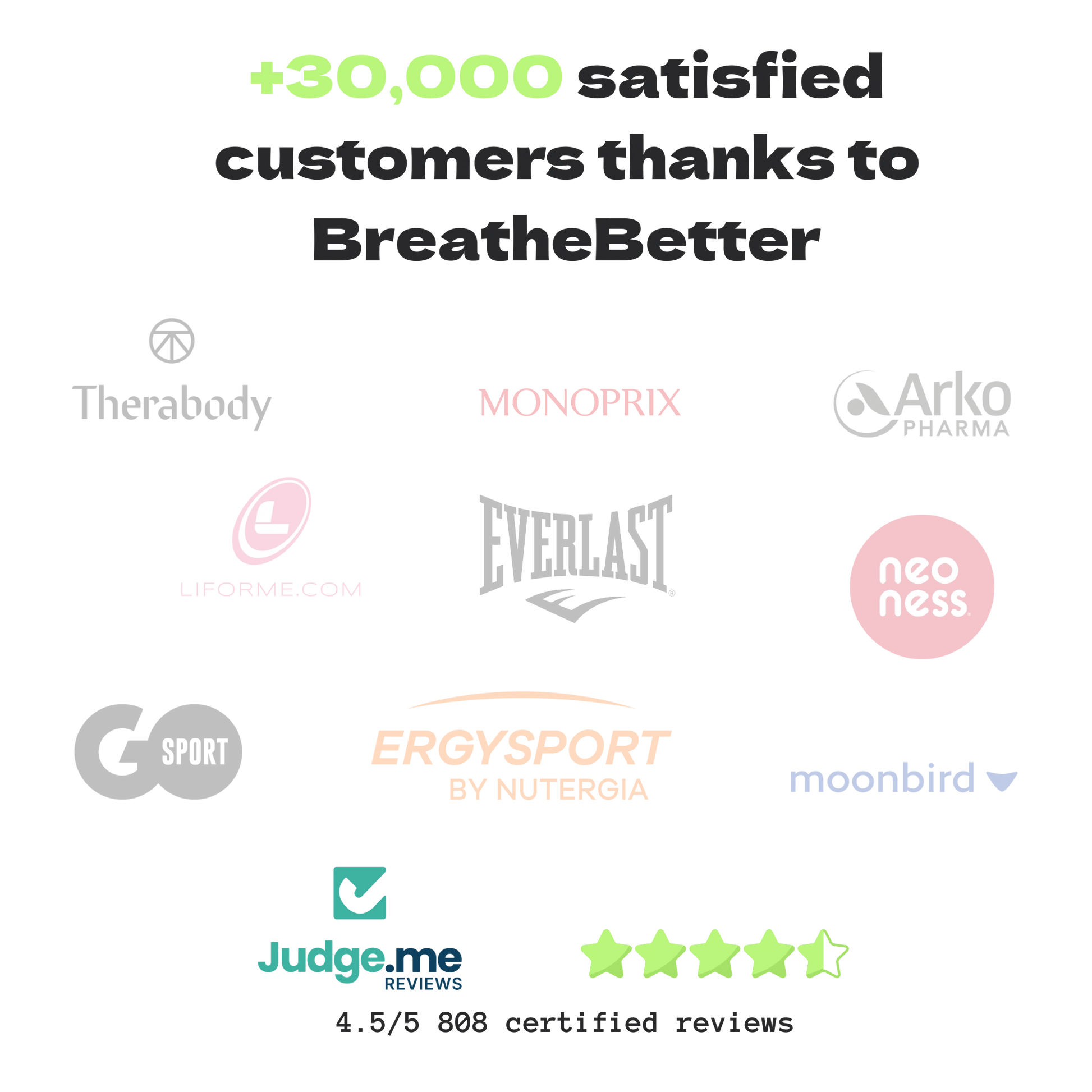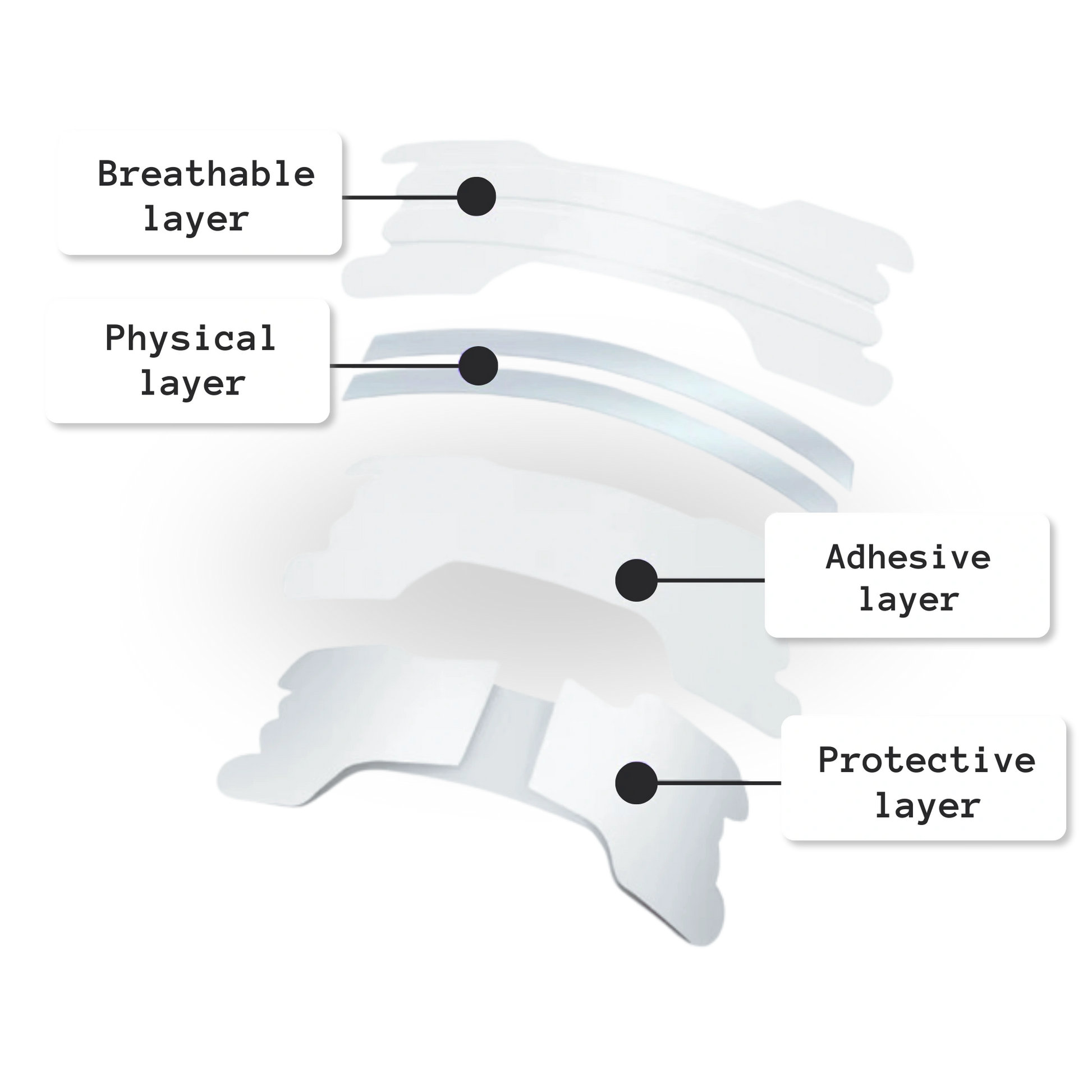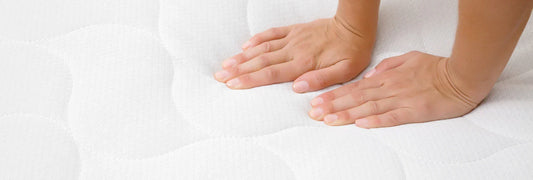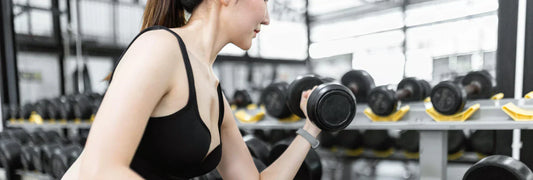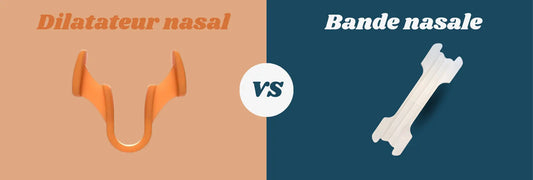Everyone tells you that running feels good. But what does it actually change in your body? What are the real physical, mental, and metabolic effects? If you already run, you may have noticed some improvements. And if you're just starting out, you probably want to understand what this sport can do for you.
In this article, I'll explain in detail how running affects your body, mind, and overall health. You'll also discover best practices for getting started, avoiding injuries, and integrating this sport into your routine for the long term.
The physical benefits of running
Running is more than just moving your legs. It's a complete transformation that affects several vital functions.
Your heart becomes more efficient. By running regularly, you strengthen your cardiovascular system. Your resting heart rate decreases, your circulation improves, and your body learns to use oxygen better.
To provide more oxygen, we recommend using nasal strips for running . With up to 31% more air, they allow you to be less out of breath and run longer.
Your muscles tone up. While your legs are the main focus (quadriceps, calves, hamstrings, glutes), you also strengthen your back, core, and all your stabilizing muscles. The result: you stand straighter, are more toned, and feel stronger every day.
Your bones become denser. The gentle but steady impact of running stimulates bone production. This helps prevent osteoporosis, especially with age.
You burn fat efficiently. On average, you expend between 500 and 700 kcal/hour. And the more endurance you run, the more your body learns to use fat for fuel. So you lose fat mass, not just water.
To summarize, here are the main physical benefits of running:
- improved cardio
- better endurance
- overall muscle strengthening
- sustainable weight loss
- stronger skeleton
How Your Body Adapts to Running
At first, each session may seem difficult. This is normal: your body is experiencing a new challenge. But it adapts quickly and very intelligently.
Your heart pumps more blood with each beat. You become more economical. What used to tire you out in 10 minutes becomes bearable for 30.
Your breathing becomes calmer and deeper. Your body learns to extract oxygen more efficiently, which prevents you from becoming short of breath.
Your muscles gain endurance and flexibility. They become able to absorb the impact of the ground while maintaining prolonged exertion.
Your metabolism regulates. Your body shifts from a "sedentary" mode to an "energetic" mode. You digest better, you sleep better, and you have more energy even at rest.
And most importantly, your recovery capacity improves. Where an outing would knock you out, you'll get back on your feet faster.
The effects of running on the mind
Those who run will tell you: it's real therapy. And it's not just an image.
Running releases endorphins, the feel-good hormones. The result: you feel more relaxed, more optimistic, and more aligned. It's almost immediate after a session.
In the long term, running:
- improve your sleep
- reduces anxiety
- build your self-confidence
- helps you better manage emotions
But above all, it structures your thinking. Running allows you to focus, relieve tension, and gain perspective. Many leaders, artists, and creators run to boost their creativity.
Starting to run: best practices
Getting started with running is easy... as long as you follow certain steps. The main pitfall is going too fast, too hard.
Here's how to get started:
- Start by alternating between brisk walking and slow running for 20 to 30 minutes
- does not exceed 2 to 3 sessions per week at the beginning
- respect a day of rest between each outing
- run at a pace where you can talk without getting out of breath
- increases duration, not intensity
After 2 to 3 weeks, you'll be able to run continuously for 20 to 30 minutes. Don't compare yourself to anyone. Your only reference point is you a week ago.
And most importantly, don't forget to warm up and stretch lightly after your workout. This reduces the risk of injury and improves recovery.
Equipment for comfortable running
You don't need a lot of gear to run, but there are some things that can make a real difference to your comfort.
First, invest in a good pair of shoes. Choose a model that suits your stride, weight, and intended use (road or trail). Visit a specialist store for advice.
Add a breathable outfit: technical t-shirt, shorts or leggings, anti-chafing socks.
And remember to optimize your breathing: BreatheBetter nasal strips help you breathe better by naturally opening your nasal passages. You'll breathe better, recover faster, and feel less tired, especially on long rides.
What to avoid when starting out
Here are the most common (and easy to avoid) mistakes:
- run every day without rest
- skip the warm-up
- wanting to go too fast too soon
- not hydrating properly
- running with unsuitable shoes
If you want running to do your body good, listen to it. Rest is part of training. And enjoyment should always be there.
Summary table: the key effects of running
| Effects on the body | Observable result |
|---|---|
| Cardiovascular system | Lower heart rate, better endurance |
| Muscles and bones | More tone, increased bone density |
| Metabolism | Less fat mass, more energy |
| Nervous system | Less stress, better mood |
| Mental | Confidence, focus, motivation |
Running transforms your body on every level. It makes you more resilient, stronger, calmer, and more serene. But to fully benefit from it, you must practice it intelligently, without rushing things.
So take your time. Set simple goals. Stay consistent. And above all, feel the joy of progress. Running isn't just about going faster or further. It's about taking care of yourself, every day.

